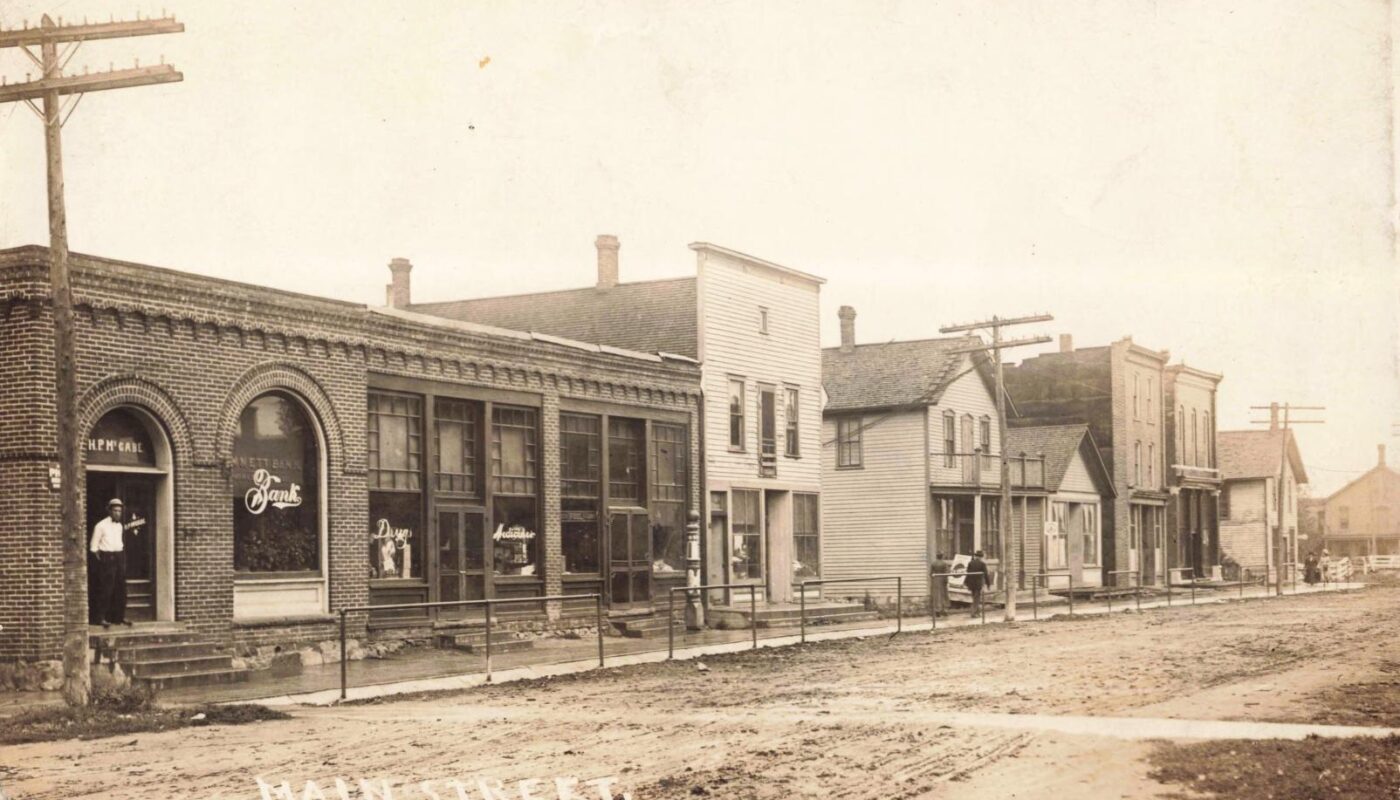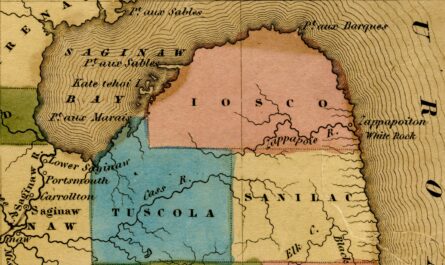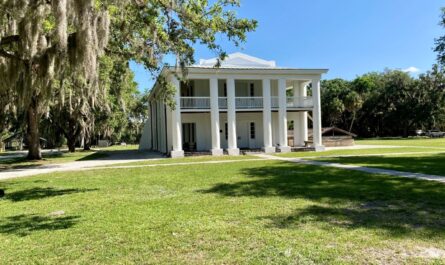Tucked into the farm fields of St. Clair County lies a humble village with a remarkable past. Emmett, Michigan, though small in size, has lived through outsized chapters of American history. The history of Emmett Michigan begins in the mid-19th century with hardy immigrant pioneers and unfolds across the decades in the rhythms of rural life.
This article explores the history of Emmett Michigan from its founding to the present day, shining a light on how railroads, religion, and community spirit shaped this town’s destiny. In Emmett’s story, we find a vivid example of small-town America at the turn of the century – a place where horses once pulled plows and trains whistled at the depot, where neighbors built both churches and livelihoods together. Join us as we journey through Emmett’s history, discovering how this “blink-and-you’ll-miss-it” village holds lessons and memories that echo far beyond its borders.
Video – Small Town, Big History: Emmett’s Got Stories!
Founding and Early Years (1850s–1870s)
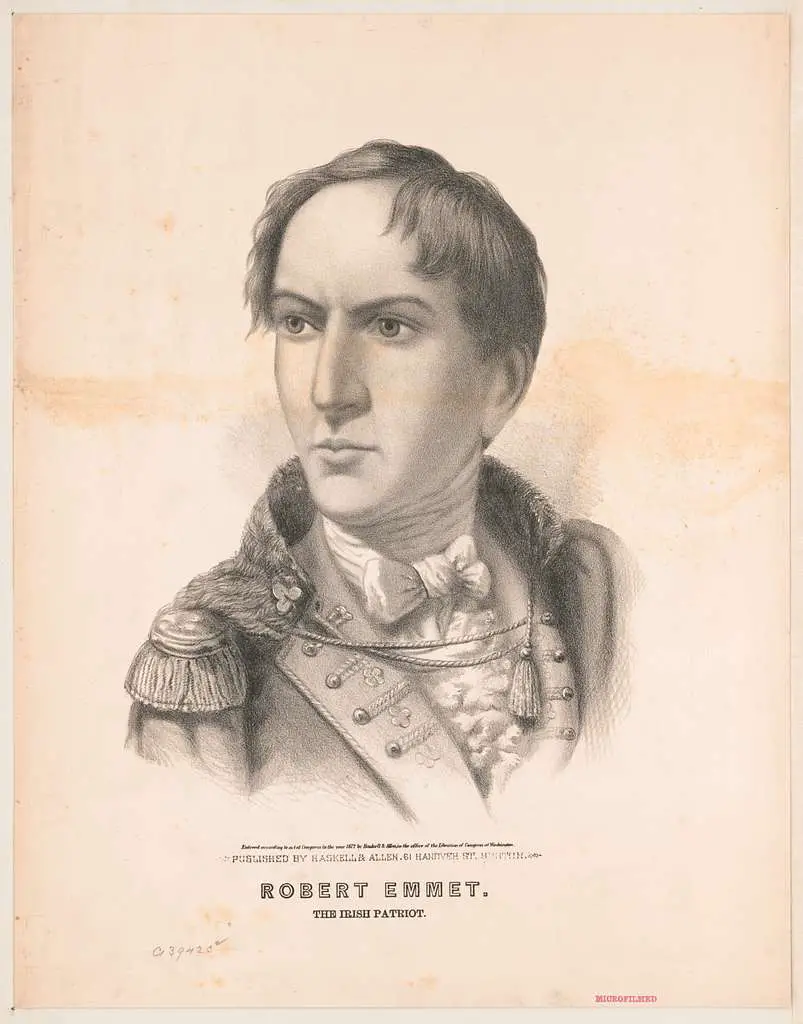
The area that became Emmett Township was first settled around 1850 by a wave of immigrant farmers, many of them Irish Catholics fleeing famine and seeking new opportunity. At that time, the land was a mix of dense forests and prairie openings. Early settlers like Patrick Kennedy – Emmett’s first township supervisor in 1852 – and others cleared trees, built log cabins, and planted crops in Michigan’s fertile soil. In honor of their heritage, they named the township “Emmett” after Robert Emmet, an Irish patriot and folk hero. The spelling gained an extra “t” over time, but the intention was clear: this new community would carry forward the spirit of hope and determination its founders brought from Ireland.
Life in those first years was rugged. Families survived by working together – barn-raisings and shared harvests were common. A visitor in the 1850s would have found a scattering of farmhouses, a tiny sawmill or two, and perhaps a simple log church where settlers gathered to pray and socialize. History of Emmett Michigan truly begins with these modest roots, grounded in faith and fellowship on the frontier.
By the late 1860s, Emmett’s population had grown enough to form a small village center. In 1870, a significant event put Emmett on the map: the Grand Trunk Western Railroad pushed through St. Clair County, laying tracks right by the village. The arrival of the railroad was a turning point. In 1872, Emmett became a scheduled stop for trains running between Port Huron and Flint. A depot was built – a plain wooden station that quickly became the hub of local activity. The railway connected Emmett’s farmers to distant markets and brought the world closer to their doorstep.
Not all early encounters with the railroad were smooth, however. One snowy December night in 1872, a passenger train stopped in Emmett to take on wood (fuel for its steam engine), and a following locomotive misjudged the distance in the blizzard and bumped the rear car. Miraculously, injuries were minor – a bit of local lore that highlighted both the promise and the perils of progress. Despite mishaps, the railroad firmly established Emmett as an official village (incorporated in 1883) and injected new life into the community. By 1880, Emmett boasted a post office, a general store, a blacksmith, and regular train service – hallmarks of a thriving 19th-century rural town.
Railroad Era and Village Life (1880s–1910s)
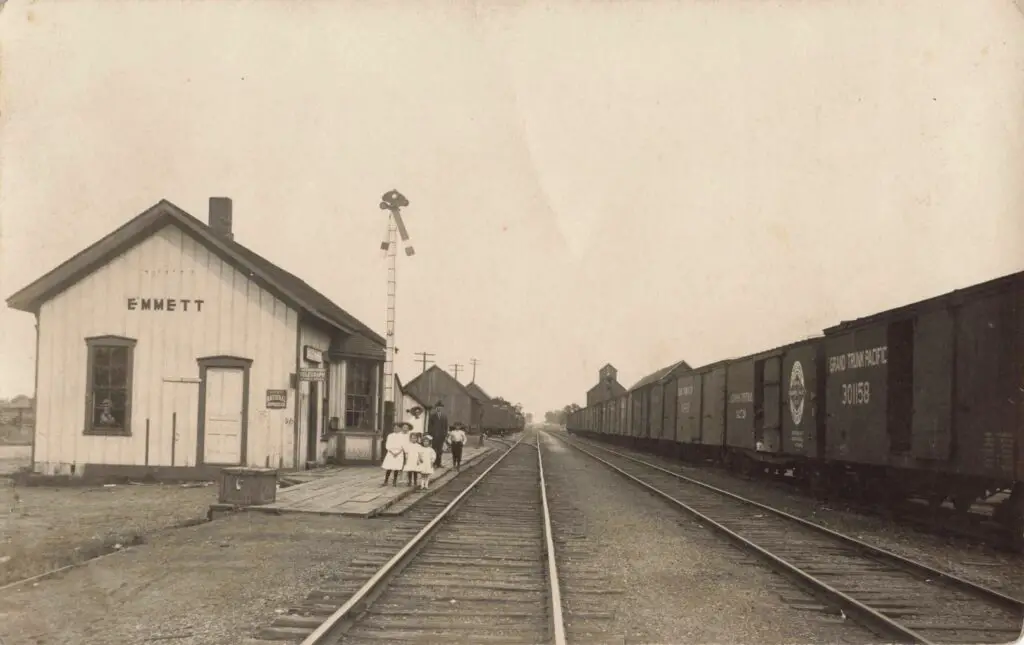
As the history of Emmett Michigan entered the late 19th and early 20th centuries, the village blossomed into a classic turn-of-the-century small town. The railroad era was in full swing, bringing farmers, merchants, and even a few tourists through Emmett’s depot.
Emmett’s economy remained rooted in agriculture – fields of corn, wheat, and hay surrounded the village – but the railroad allowed a modest commercial district to flourish along Main Street. In 1907, a resident could hop on the morning train to Port Huron to do some shopping or catch an interurban trolley from nearby communities, illustrating how connected even rural places were becoming.
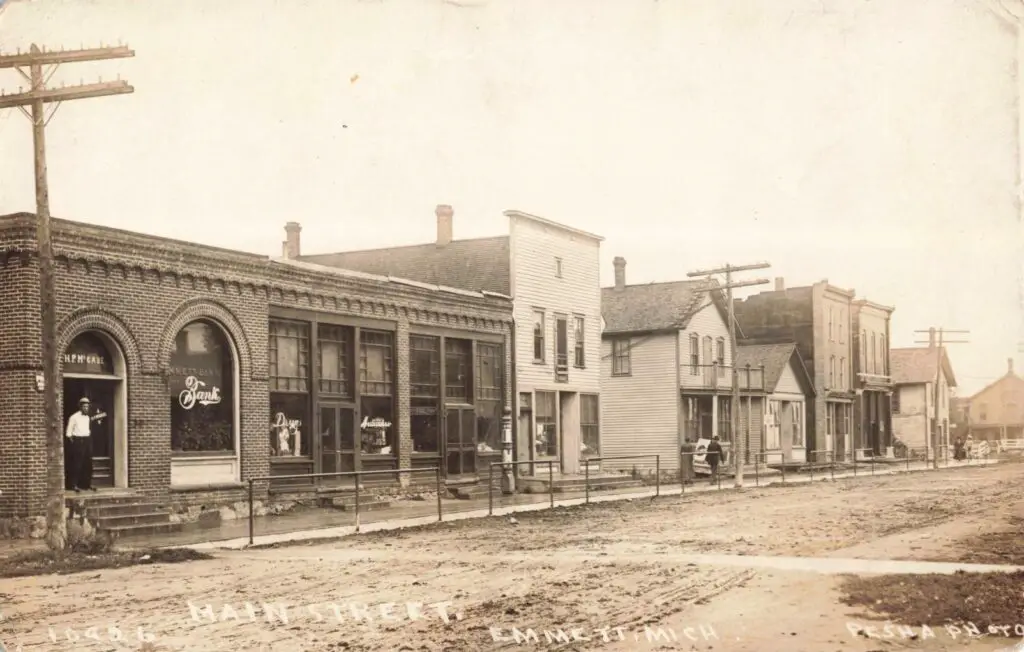
We get a wonderfully detailed picture of Emmett around this time from surviving photographs and postcards. One real-photo postcard from 1912, titled “Main Street, Emmett, Mich.”, reveals a dusty unpaved road busy with activity. In it, false-fronted wooden storefronts line the street, and a boardwalk made of planks keeps pedestrians out of the mud.
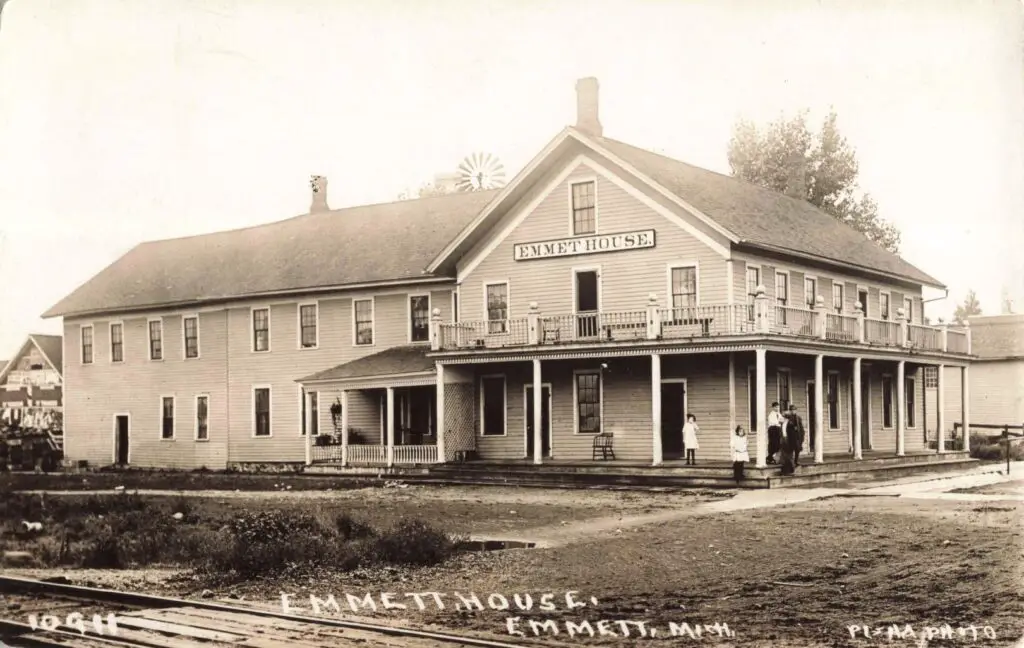
There’s also the Emmett House, a small hotel and tavern where travelers could get a meal or farmers could relax on Saturday evenings. Hitched in front of these businesses are horse-drawn buggies – the pickup trucks of their day. Notably, a couple of early automobiles appear in photos by the mid-1910s, heralding the changes to come.
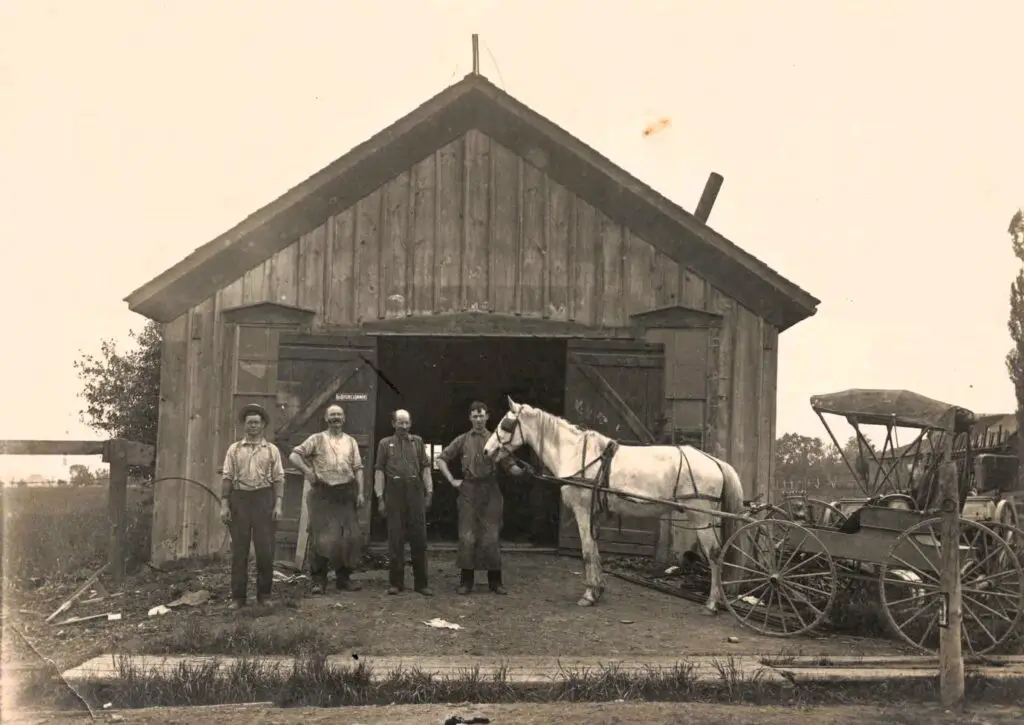
Emmett’s livery stable owner, Martin “Grandpa” Kinney, reportedly joked that “hay burners” (horses) and “gasoline buggies” (cars) got along just fine in his town, as there was room for both on Main Street. Indeed, Grandpa Kinney’s Livery Stable was an Emmett institution – one photograph from the 1900s shows Kinney and a group of local men posing proudly with their horses and carriages in front of his barn.
Daily life in Emmett circa 1900 had a comfortable routine. Each morning, the whistle of the Grand Trunk train could be heard as it approached the depot. Children walking to the two-room schoolhouse might stop to watch the locomotive chug in, marveling at its size. The school (later named Emmett Elementary) sat not far from the Catholic church, and on its playground the shouts of recess echoed across town. At midday, local shopkeepers might close briefly to lunch at home – everything in Emmett was within a short walk.
Emmett’s Community and Culture
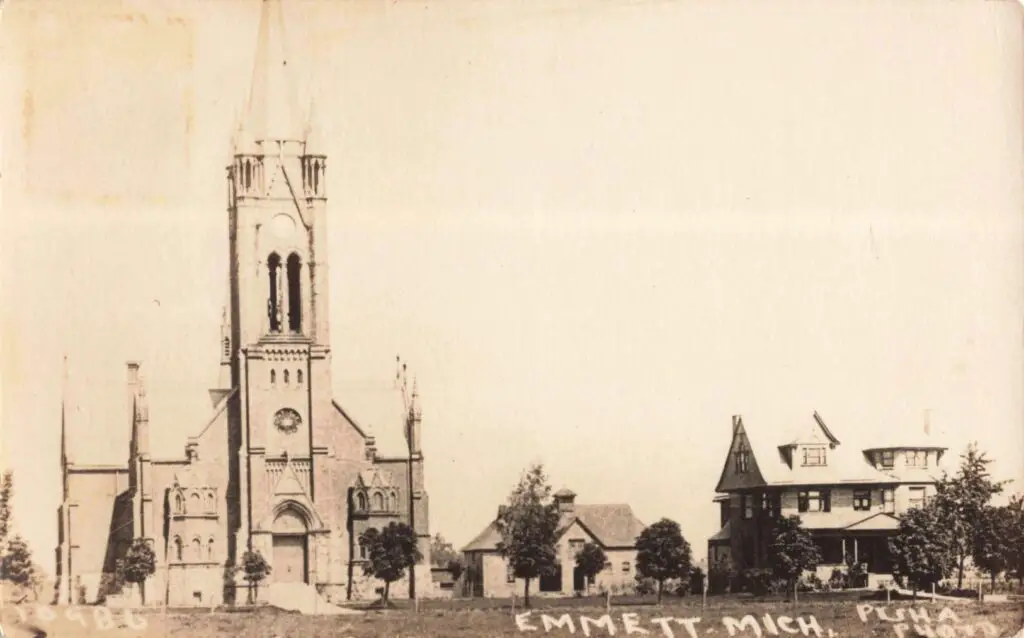
Despite its small size, Emmett developed a rich social and cultural life early on. The village’s strong Irish Catholic heritage meant that Our Lady of Mount Carmel Parish played a central role. The parish was formally established in the 1860s, and by 1884 the community erected a large brick Gothic Revival church that became Emmett’s proud landmark. Its tall steeple could be seen from miles away, a beacon of stability on the flat landscape. Adjacent to the church, a parochial school run by Dominican sisters provided education to local children well into the 20th century.
The current church building for Our Lady of Mt. Carmel Catholic in Emmett, was built in 1970 to replace the one that was destroyed by fire in 1966.
Emmett’s Transition to Modern Times (1920s–Present)
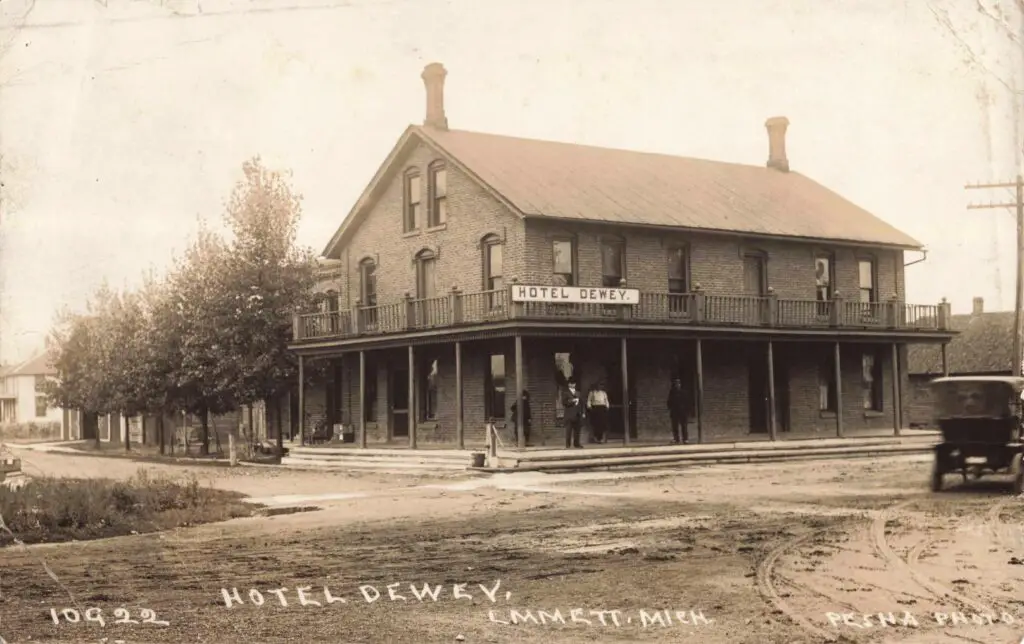
Like many small farming towns, Emmett saw its peak population and activity in the early 20th century. The 1920s brought automobiles in earnest – families saved up to buy Fords and Chevrolets, which made the trip to the county seat or to Detroit much easier. Roads were improved; by the 1930s, M-19 (the highway through Emmett) was graded and eventually paved. As car and truck traffic grew, the reliance on passenger rail waned.
The Grand Trunk depot that had once been the bustling heart of Emmett grew quiet. By 1931, Grand Trunk Western discontinued regular passenger stops in Emmett (the Blue Water line still passed through but without halting). The depot agent position was eliminated, and the station building was later sold off and repurposed. (Local lore says it became a feed store and stood until the 1970s when it was torn down.)
The Great Depression hit Michigan’s farm communities hard. Crop prices fell, and some families lost their farms. Emmett’s close community, however, proved resilient (even if we avoid the word “resilience,” the sentiment was real). Neighbors banded together – a contemporaneous report in the Port Huron Times Herald highlighted how Emmett’s church ran a soup kitchen one winter and the town organized “frolics” (community work parties) to help struggling farmers plow and plant.
Yet, the history of Emmett Michigan did not end or fade away. In recent decades, Emmett has experienced a gentle revival as people seek the tranquility of country life within commuting distance of cities like Port Huron or Detroit. Subdivisions have appeared on what were once cornfields, and the population of Emmett Township has climbed back over 2,500 as of 2020. The old institutions persist: Our Lady of Mt. Carmel Church still holds weekly Mass (the current church building dates to the 1880s, lovingly maintained), and the local elementary school keeps the tradition of small-town education alive.
A Final Thought on the History of Emmett Michigan
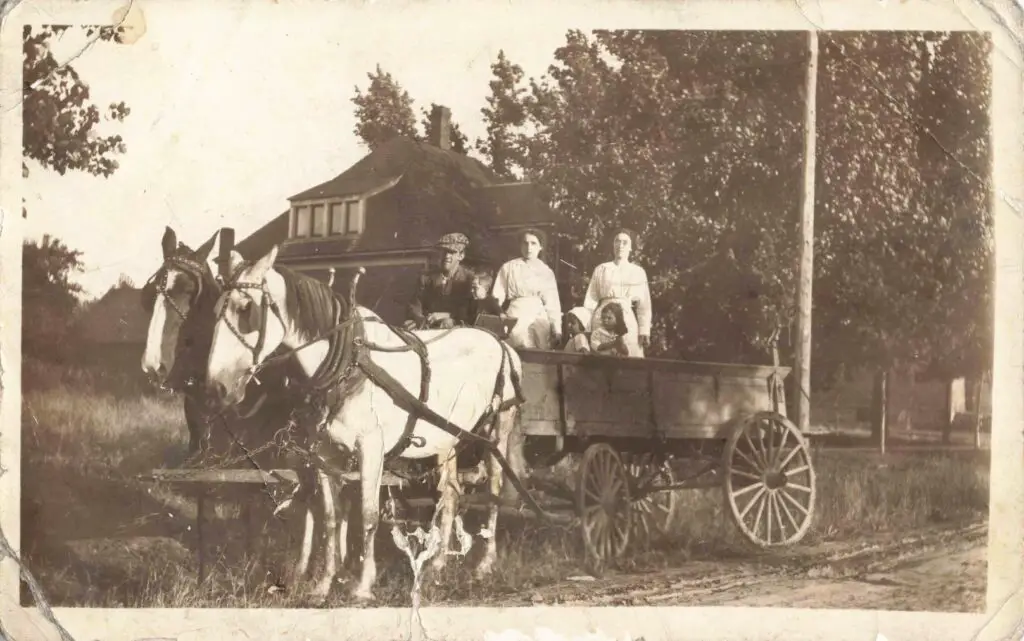
In the grand scope of history, Emmett, Michigan might appear as just a footnote – a rural pinprick on the map with no famous battles or celebrity residents. But as we’ve seen, the history of Emmett Michigan is rich with the same themes that define the American experience. It’s a story of settlement and adaptation, of how the railroad and later the highway transformed daily existence, and of how a strong community can sustain itself through change. Emmett’s story is told in the laughter of children at a 1900s school picnic, the pride of a farmer shipping his first crop by rail, the silence of a decommissioned train depot, and the peal of church bells on a Sunday morning. These are ordinary moments – yet in aggregation, they are extraordinary.
Works Cited
Port Huron Times Herald (archival articles). “Train Accident at Emmett” (Jan 1873) and community news clippings (1912–1916) – [Referencing local events such as Orange Day excursion and Volunteer Fire Brigade formation].
“Emmet, MI (St. Clair County).” Michigan Railroads – Railroad Stations & Locations. MichiganRailroads.com, 2025. Web.
Emmett Township, St. Clair County, Michigan. Wikipedia. Wikimedia Foundation, last modified 2023. Web.
David V. Tinder Collection of Michigan Photography. William L. Clements Library, University of Michigan. Digital image records for Emmett, Michigan (IDs 55987, 55990, 55991, etc., 1908–1916) – including “Main Street, Emmett”, “Grandpa Kinney’s Livery Stable”, “Hotel Dewey, Emmett”quod.lib.umich.edu, and “Catholic Church Emmett”. Accessed 25 Oct 2025.
“Emmett Village History – St. Clair County Directory 1883.” St. Clair County Local History & Genealogy. St. Clair County Library (digital archives), n.d. [Provides early settlement and incorporation details].

